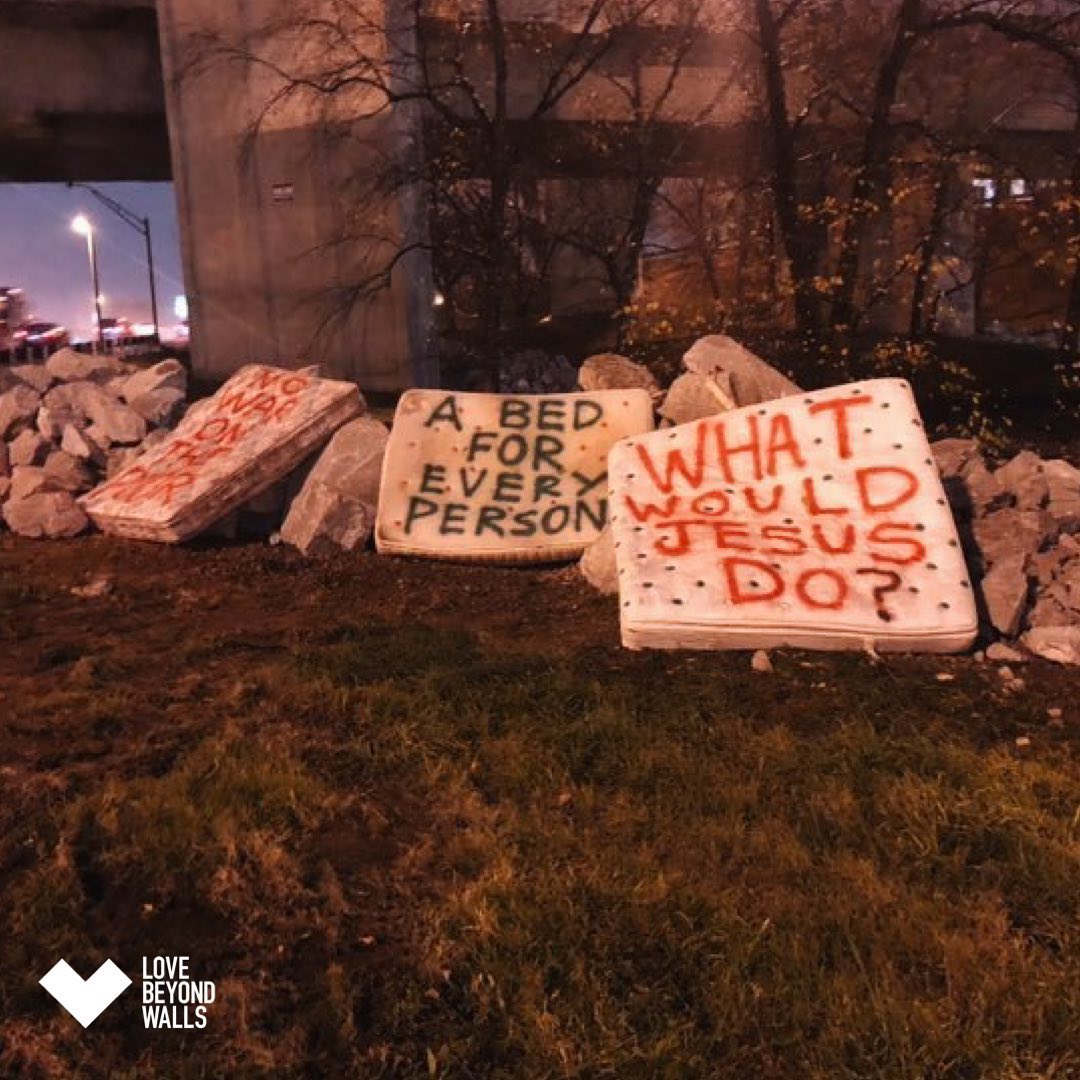
Maltreatment towards communities experiencing homelessness is not only limited to passersby and poorly structured shelter systems. It is also among sights we drive and walk by every day in Atlanta: hostile architecture.
What are examples of hostile architecture? Architecture like curved benches, gapped awnings at bus stops and corporate buildings, benches sectioned off by “armrests”, and even man-made foliage is used to keep individuals experiencing homelessness from finding shelter there. We may look at curvy and unique benches as an artistic flair in our neighborhood, but in reality, it has been made to not look comfortable for the sleepy seeker of rest. Gapped awnings leave gaps of security for those needing shelter for the evening. Man-made foliage on sidewalks looks inviting but is actually pushing away the possibility of creating a space to sit or sleep without being in the way of walkers and runners. We’ve even seen parks barricaded with fences in the heart of our city that were once safe havens for those who needed them.
Besides smaller attempts at labeling those experiencing homelessness as unwelcome, what we see more than anything on our commutes around the city are right under our noses and right under our bridges: boulders. We see boulders under and around bridges, always thinking these are just markers to determine where new construction is going to happen, but they are not just telling us what is to come. They are telling us who cannot come.
With huge boulders crowded under bridges, there is no comfortable or relatively flat space for those experiencing homelessness to set up a temporary home or community to bridge the gap between losing a permanently structured home and finding one. For those who still try to remain under bridges, they are forced to risk the dangers of resting by major highways where, let’s face it, local Atlantans drive at unpredictable speeds every day. Our city grows in population by the thousands each day, causing a rise in daily car accidents on our expressways. No one deserves to have to resort to risking the possibility of being hit by random bits of traffic debris, or worse, the cars and massive vehicles within that traffic.
These boulders exclude the existence of other people, and when Atlanta contains the highest number of people experiencing homelessness in the state of Georgia, that excludes a large amount of Atlantans that exist just as much as those only using the bridges for commuting. They keep individuals from practicing essential needs like sleeping, which according to the Department of Justice, is unconstitutional to do. By displacing our neighbors experiencing homelessness, they are being criminalized for trying to exist.
Criminal activities should not include needing to sleep and not having the widely accepted tools to do so. Therefore, the way we structure our cities should not reflect that we believe some of our locals are criminals for being restless due to the lack of spaces to rest.
If you’d like to hear more information on hostile architecture, have a listen to our recent podcast where we chat about how hostile architecture may be done to erase a problem, but in reality, it erases the humanity of those experiencing homelessness.
Feel free to listen to our podcast below to learn about what that fancy term means:
https://m.soundcloud.com/
LBW Team

